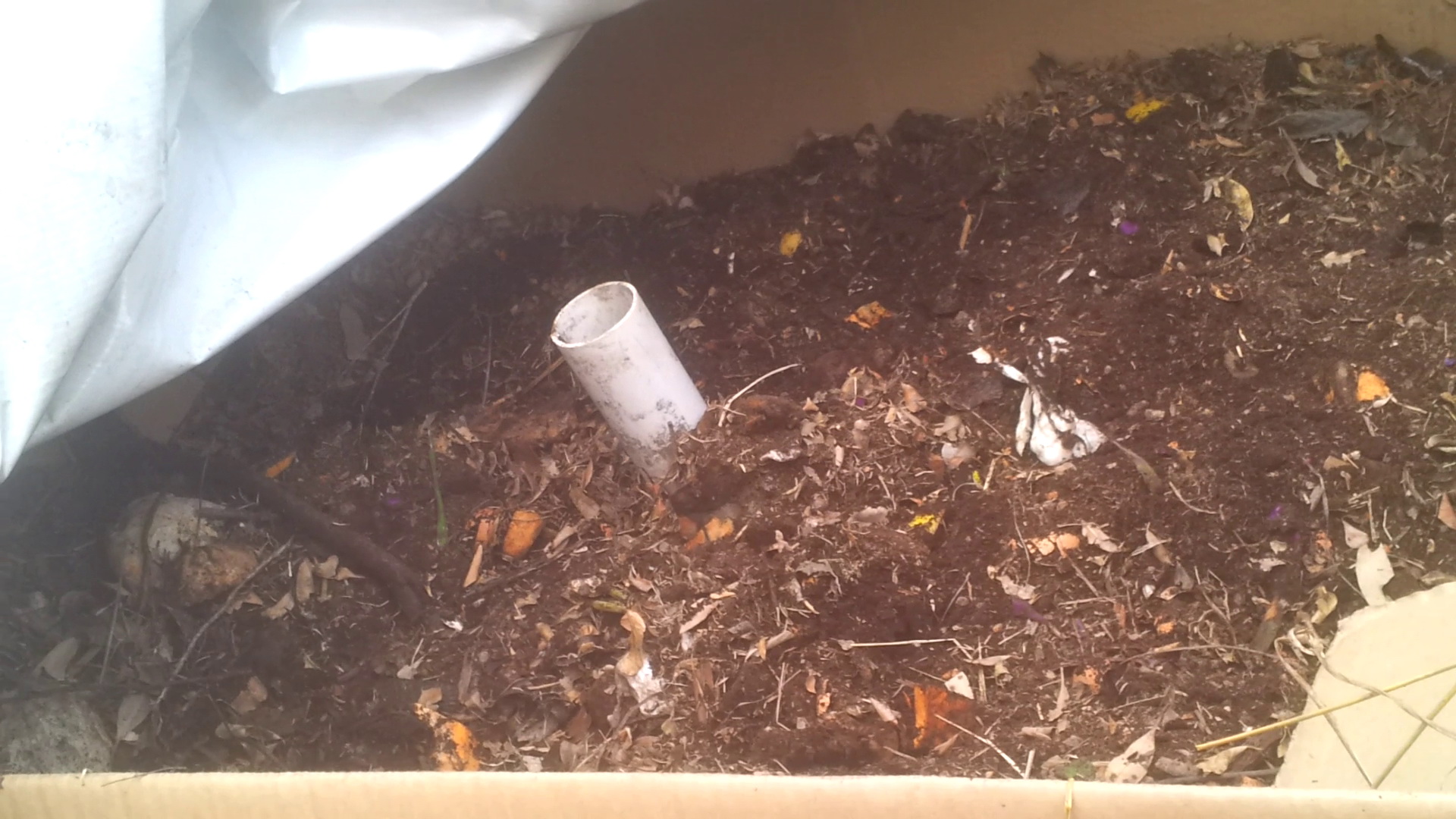My apologies about the delay. I work on these projects alone so sometimes the videos I do take that little bit longer to be edited and uploaded. This time I’ve been downright neglectful!
A few people have been messaging me from different places around the world asking about the results, enough to make me realise that it would actually be quicker getting the video up rather than replying individually. See polite queries do work!
I decided to open the compost bin up after 40 days. There was no reason for this figure other than it was a nice round number and I was in dire need of compost so that I could put in the remaining fruit trees.
This is just a reference pic showing how high the compost bin was filled. It’s almost to the top of the upright air pipe.

Here you can see the cross section of the outer skin with the layers of grass, leaves and sugar cane. It was pretty dry around the extremities, most likely due to absorption of moisture into the cardboard which would then evaporate out. There was a white fungal bloom all around the pile.

If you remember from part 2 of these pages that I did add in two full garbage cans of cafe waste, 120Litres(30gal) in total, late in the test period. You can see the whole avocado seeds that obviously were too hard and large to break down plus they were sitting on top of the pile. Note as well how much the whole pile had lowered from the top of the upright pipe.
As I dug deeper the compost got darker and was broken down significantly more than the outer areas as was to be expected. The most noticeable thing for me was the distinct lack of horse manure smell. There was none whatsoever. It had a smell of old wet broken down leaves like a rainforest floor. (Do not inhale compost spores, I smelt it in the video only because it was completely wet and it wasn’t right under my nose)

Deep inside where the concentration of pipes was, the material was wet and finely composted. Only the large woody bits of sugar cane and sticks maintained their form with the occasional avocado seed. The colour in the middle was a deep black hue and there were grubs crawling in the outer areas. No sign of any pieces of food at all.

CONCLUSION
Having aeration pipes definitely speeds up the bacterial breakdown of material. There were still large chunks of woody material but they will never break down in such a short time period. After using the compost with my trees and in garden beds I have had absolutely no volunteer seeds growing from the horse manure and fruit and vegetable waste which was a good indicator that the heat levels were hot enough to destroy them.
The breakdown of the cafe compost was pretty amazing as well. Other than the larger bits of avocado seed there was pretty much no sign of any kitchen waste left in the pile no matter how deep in the pile I dug.
The dry material on the edges were no use for me so I left it in the compost bin to provide starter bacteria and material for the next batch as it was not broken down enough. I do believe the angled pipes are a better system than some of the other versions of this as it utilises convection rather than ebb and flow. I did put a lighter flame near the lower end of the pipe early in the composting when I expected the temps to be at their highest to see if it was drawing and it seemed to do so.
I went away for a while and with our extremely hot summers the edges did dry out a lot so more water or wet material during the process could have made it better.
Enhancements: Because I had it on a raised platform for airflow underneath, there were cool spots at the bottom and no earthworms had access. I’ll simply cut the green shadecloth from the rear half of the base and infill the holes on the pallet with dirt so the worms can make their way up to do their magic. This will still allow airflow up through the front half of the base pallet. Otherwise adding worm castings manually could be a less favourable option.
I would definitely use aeration pipes even if I was turning compost piles as well as those who wish to let it compost over a long period of time. It makes sense given that aerobic bacteria require a source of air. This was a good balance for getting a lot of free compost in a relatively short period of time.

